What is an Entrepreneurial Edge?
Entrepreneurs are constantly seeking an edge, an advantage. In fact, most entrepreneurs are wired to look at the world from an opportunist’s perspective and are regularly working an angle, an approach, or a way of attacking a business opportunity that others have missed or have left exposed.
Business consultants get paid big bucks to help organizations identify, create, and maintain a ‘competitive advantage’. A competitive advantage is the million-dollar term business textbooks use to describe an entrepreneurial edge. A competitive advantage is defined as the ability of an organization to provide its products or services with either: 1) a higher value to their customers than a competitor but at a similar cost; or, 2) the same value but at a lower cost. A competitive advantage that is sustained should provide a business with the ability to realize consistently higher profits than its competitors.
Higher profits, the goal of many organizations and entrepreneurs (and the successful competitive advantages they build) can be reinvested in things like:
1) Growth by acquiring market share, entering new markets, or developing new products;
2) Brand enhancement programs or product improvements that increase value;
3) Capital improvements that reduce costs or increase quality;
4) Compensation that attracts or retains top talent who will perpetuate the advantages.
5) Legal maneuvers that protect business investments.
Establishing an Entrepreneurial Edge after the Great Shutdown
The most obvious competitive advantage for the period immediately following Covid 19 will be speed. As the economies of the world rebound from the Great Shutdown, there will be a huge ‘land grab’ for market share. The best time to enter a market is during a growth phase when there is typically more demand than supply. The markets, post Covid 19, will offer huge economic opportunities for entrepreneurs that will see large unmet demands and weakened incumbents too slow or unable to respond. Entrepreneurs should look to freelancers and flex labor sources as a way to respond to the huge opportunity that is about to unfold.
Entrepreneurs, however, should not limit their focus to timing the perfect entry or gathering resources for rapid growth. They should also seek valuable competitive advantages in those markets that can be built and sustained. These efforts should be undertaken knowing that the market will have shifted, with consumers seeking more comfort (and security), more convenience and more community. They should also align with transformative forces at work in both local and global economies.
These forces include three pushing a massive transformation (1. Globalization; 2. Knowledge Growth; and 3. Technology Adoption); three pulling the same transition (1. Consumer Demand; 2. A Demographic Shift; and 3. A Cultural Revolution); and, three enablers that are greasing the wheels of change (1. Digital Communication; 2. Marketplaces and Co-working Spaces; and 3. Social Supports). Together, these forces will drive rapid transitions on a local and a global scale. Entrepreneurs need to see, catch, and ride these massive waves of change as they will lift a few and crush many. (Author note: To read more on this topic see – THE FUTURE OF WORK IS HERE— An Introduction to a Series of Articles)
Creating and Sustaining an Entrepreneurial Edge
When considering what advantage to create and sustain, market research must be undertaken. The goal of the research and the related analyses should be to determine how the target market is segmented and what each of those segments value. Mature markets typically segment into three relatively distinct groups of consumers. Those that are motivated primarily by:
1) The best brand. This group always wants to be associated with the hottest trend. They tend to be image-conscious shoppers.
2) The best product or service. This group cares about quality and performance. They will often research the possible choices thoroughly.
3) The lowest price. This group shops like it’s on a budget, seeking the product or service that meets most of their needs for the lowest price available.
The goal of every entrepreneur should be to focus on a segment of the market that:
1) Is large enough to sustain their business.
2) Will need and value the product or service they will offer.
3) Is aligned with a sustainable competitive advantage that they can create and maintain.
Said in a more direct way: You want to be the best provider in the best market segment for you.
A competitive advantage can come in many forms. The following is a list of just some of the ways an entrepreneurial edge could be realized after the Great Shutdown:
1) Market Share – The dominant player in a market may be able to control market pricing, vendors and supply, advertising channels or location, and labor. Many companies seek to be #1 or #2 in their market(s). Find a market you can enter and establish your business as one of the top dogs during the rebound.
2) Brand Name – The company with the best reputation for a product or service within a market segment should be able to charge a premium. Brands are tricky to cultivate, but many old standbys will become available during and after the Great Shutdown. Consider purchasing or licensing a stellar brand to enhance your market positioning.
3) Technology – Developing or licensing a new technology, process, or recipe can make a big difference to the success of a business. Development can take a lot of time, however, many patents or licenses to intellectual property may become available freed up by struggling businesses. And many other agreements with volume commitments may see those requirements breached and become available.
4) Location – For many service businesses, the location of a physical or digital space can make a huge difference to their success. The very best locations are also scarce, making the advantage significant and defensible. Consider approaching landlords with the goal of taking over leases from struggling businesses (but at a negotiated, reduced price).
5) Supply – Owning exclusive rights to a supplier’s products or services can be a significant advantage. If you own the exclusive rights to a valued product or service in an area, you may have a very valuable business while that product or service is in high demand. Like licenses for intellectual property, many supply agreements with volume commitments may have been breached and become available.
6) Customer Loyalty – This is one of the hardest advantages to build, but it can also be very valuable. Loyalty will be increasingly important in the post Covid 19 era when people are seeking comfort, convenience and community. Building this will take time. Consider purchasing (and nurturing) a struggling business that has a sizeable group of consumers who are rabid fans of their product or service.
7) Barriers to Entry – Walls make for good neighbors and even better markets. Protected markets are much more valuable than unprotected ones because new competitors are kept at bay. Many walls will be lowered for a period of time after the Great Shutdown, but make sure to find a market or an opportunity that will see these rebuilt over time.
I’m no Zen master. I don’t hold the key to personal enlightenment, but I have led many turnarounds and… “I did drive my 1967 Deluxe VW Microbus last night”.
FlexTal is the #1 flexible talent matching platform. Every day, we match organizations with pro-level independent contractors for flexible hourly and project-based engagements. Match with the Right Pro, Right Now.



